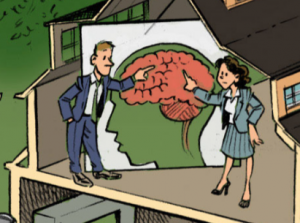As I have been engaged in the topic of agile leadership for more than seven years, I still find that there is a variety of rumors what agile is about. Sometimes, I even have the impression that managers use the world agile in the same context like fuzzy, a little bit chaotic or short-sighted. Often, “agile” is used in connection with the start-up scene.
Honestly, I have seen many start-ups and hardly one of them was organized in an agile way. Yes – in many start-ups there is a special spirit of passion you will not find in many larger corporates. But the only thing a corporate CEO can learn from them is: If you have a strong vision, even a semi-organized crowd of enthusiasts is able to strive hard.

I have been working in the area of strategy and transformation for two decades. And I was always wondering: If a board has defined a strategic intent or mission – how can this be converted from fancy PowerPoint slides into concrete action? It is quite frustrating to know that nine of 10 strategic initiatives fail to deliver on their promises. Every 4th strategic program totally fails – according to a study of the German Association of Management Consultants. Hard times for top managers to be aware that 90% of what you strive for does not work out.
My personal journey to find out how to make strategy truly happen led me to social psychology, neuroscience and innovative concepts of management. Based on the insights in the intersection between these topics, we created an approach called Strategy Activation that has proven to deliver convincing results during the last years. More and more I got aware that what we had called Strategy Activation was what others called “agile philosophy”.
When I understood the common ground of agile philosophy, I had an inner “Heureka!”. Yes. That’s the way to make it happen. That’s a smart approach to not only talk about, but to bring strategic ideas alive. Today, I get insights in many large corporates that try “agile” – often supported by well-known and venerable consulting firms: they initiate squads, funnels, tribes and herds, they start agile programs and impact hubs, digital product factories and agile leadership formats – countless words that somehow sound innovative and fancy. But sometimes my blood is freezing when I understand how little of it is truly reflecting agile thinking and behavior.
Therefore, I went two days into a nice little hotel in the Alps, having a gorgeous view on Germany’s highest mountain. Walking through this remote landscape, I was reflecting dozens of strategic agile programs and initiatives I was somehow involved in. What was agile truly about? And why was it so much used in the management language and so rarely practiced?
Agility itself is what it is made for: It represents a highly complex social change that is persistently calling for adaptation of the way how humans organize decision making and work. It is itself a complex matter not fully understood and investigated and we are living in a time where leaders and organizations have to find out what it really is about. They have to try, fail and learn. The last point is the decisive one!
Nelson Mandela said this great quote:
I never loose. I either win or learn.
Nelson Mandela Tweet
How much does this mindset apply to top management? Many concepts of management that we use today have been developed in times of Taylorism and Industrialization. For me as a leadership passionate, it is sometimes difficult to perceive the obvious blind spots management teams have when it comes to innovate their leadership style. You hear a lot of ambitious words, but rarely you observe a consistent behavior. Everybody in the organization is aware of it – except the managers themselves. As one CEO of a large retail company said to me:
Often, when a new boss takes over, he demands: everything has to change! In reality he means: everything but me!
This observation I can confirm: when somebody is too much claiming for agility and change regarding others it becomes suspicious. The reality behind might be that he wants to make others thinking and acting like him, because he himself may be hold back by a strong unconscious resistance to adapt himself. This is not agile!
Enjoying my latte macchiato with mountain view I was inspired to formulate 7 theses about agile leadership that I want to share with you today and further explain in the upcoming weeks.

If you have any remarks or feedback: I am curious to learn about other experiences and insights regarding agile leadership. Whenever you want to share a thought, please send me an email: s.morgner@leadership-munich.org

About the author: Sebastian Morgner
Sebastian Morgner is Managing Director of the MLI Leadership Institute in Munich. He is advising global management teams in the area of agile leadership and strategy activation. For anybody who is interested to experience more about the topic, he offers an open leadership lab in Berlin: www.agilemeetsleadership.de




